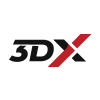Odoo Inventory Management is a robust solution designed to give businesses full control over their stock, streamline warehouse operations, and optimize the supply chain. With real-time tracking, automation, and integration with other business processes, Odoo Inventory ensures that companies can maintain optimal stock levels, reduce operational inefficiencies, and fulfill orders accurately and on time.
Key Features and Capabilities
Real-Time Stock Tracking
Odoo Inventory provides live visibility of stock levels across multiple warehouses, locations, and sales channels. Businesses can track each product’s quantity, status, and location in real time, ensuring that inventory is always up-to-date. This reduces the risk of stockouts, overstocking, or misplaced items.
Warehouse Management
The platform supports multiple warehouses, enabling organizations to manage complex logistics operations efficiently. Features such as barcode scanning, batch tracking, and serial number management improve accuracy and speed in warehouse operations. Businesses can also define routes for stock movements, optimize picking and packing processes, and monitor warehouse performance.
Automated Reordering
Odoo Inventory allows businesses to automate replenishment by setting minimum and maximum stock levels for each product. When stock falls below the defined threshold, the system can generate purchase orders automatically, reducing the risk of running out of critical items and ensuring business continuity.
Multi-Location and Multi-Warehouse Support
Organizations with multiple storage locations can efficiently manage stock transfers between warehouses, track inter-warehouse movements, and consolidate reporting. This is especially useful for businesses with distributed operations, ensuring accurate inventory levels across all locations.
Product Categorization and Variants
Products can be organized by category, brand, or type, and different product variants (size, color, model) can be tracked individually. This allows businesses to manage complex inventories easily and provides accurate insights for sales, reporting, and planning.
Integration with Sales, Purchase, and Accounting
Odoo Inventory seamlessly integrates with Odoo Sales, Purchase, and Accounting modules. When a sales order is confirmed, stock levels are automatically updated; purchase orders are tracked, and accounting entries are synchronized. This ensures end-to-end visibility and reduces manual data entry errors.
Reporting and Analytics
Advanced dashboards and reports provide insights into inventory turnover, stock valuation, slow-moving products, and warehouse performance. These analytics help businesses make informed purchasing and stocking decisions, optimize storage costs, and improve cash flow management.
Barcode & Mobile App Support
Odoo Inventory supports barcode scanning and mobile device operations, enabling warehouse staff to perform picking, packing, and stock-taking efficiently. Mobile functionality enhances productivity and accuracy, reducing human error and operational delays.
Benefits for Businesses
-
Optimized Stock Levels: Maintain the right amount of stock to meet demand without overstocking or stockouts.
-
Operational Efficiency: Automate processes such as reordering, transfers, and tracking to save time and reduce manual errors.
-
Improved Accuracy: Real-time updates and barcode scanning ensure accurate inventory management.
-
Cost Savings: Reduce storage and holding costs by optimizing warehouse operations.
-
Scalability: Easily manage multiple warehouses and locations as the business grows.
Use Cases Across Industries
-
Retail & E-Commerce: Manage multi-channel inventory and prevent stock discrepancies.
-
Manufacturing: Track raw materials, work-in-progress items, and finished goods efficiently.
-
Healthcare & Pharmaceuticals: Ensure accurate tracking of medicines and medical supplies.
-
F&B & Hospitality: Manage perishables, inventory rotation, and supplier coordination.
By implementing Odoo Inventory Management with Royex, businesses gain a fully integrated solution that connects inventory with sales, purchases, and finance. This ensures not only accurate stock control but also improved operational efficiency, cost savings, and better decision-making across the organization.











